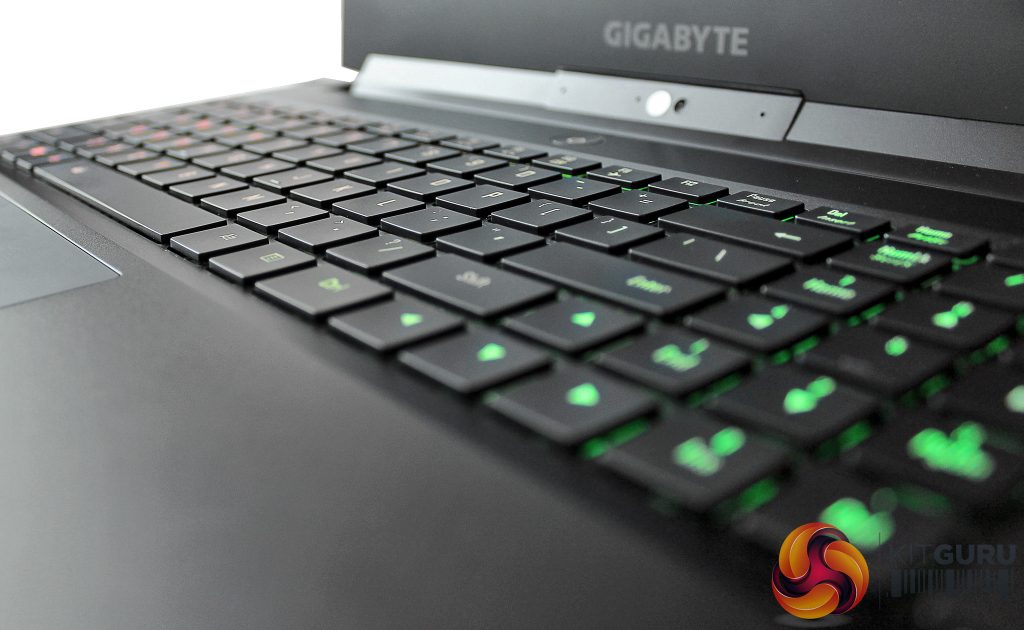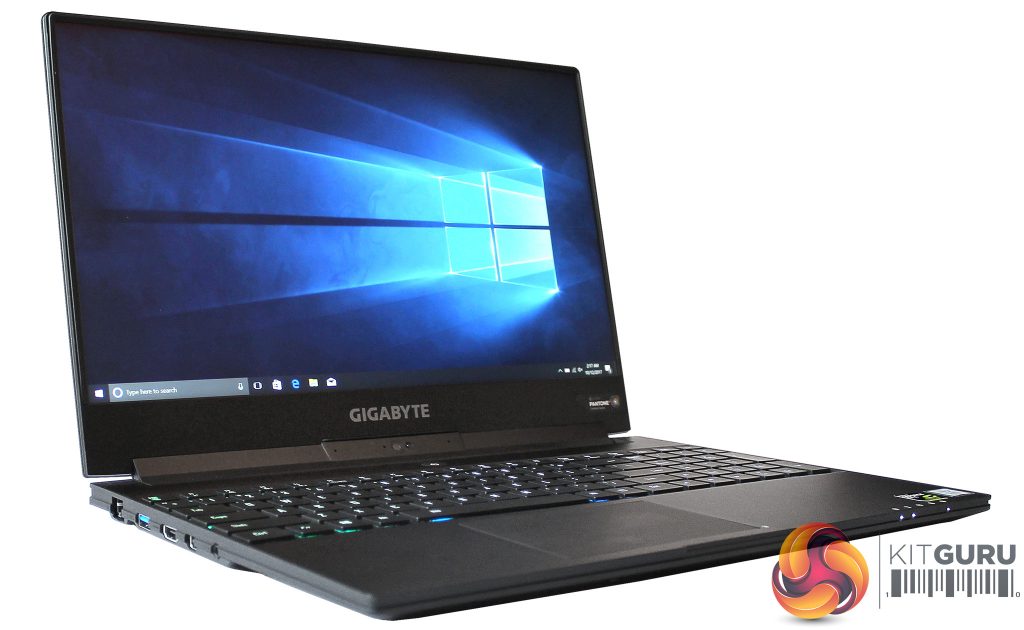The keyboard is a scrabble-tile unit with RGB lighting – the only aesthetic feature on this machine that’s more likely to be found on a gaming notebook.
The only layout issue is the single-height Return key, and that’s something that any longer-term user will become familiar with.
When it comes to typing, Gigabyte’s machine is excellent. The keys are large and comfortable, and have good speed and consistency – they move down quickly and reliably, and the base is solid.
All of those attributes work well for typing, and they lend credence to this machine’s work credentials – but they’re less impressive for gaming. There’s just not enough travel to deliver the kind of snappy, physical action that we expect from gaming keyboards, and the Gigabyte’s shallower typing action means we’re worried about missing crucial button presses during frantic moments.

The keyboard only falls down in that gaming area – for every other scenario, it’s superb. The trackpad is excellent, too, with a fast, shallow and solid mechanism that bodes well for fast-paced gameplay and slick Windows navigation.
The Aero has a 15.6in Full HD screen, which means there’s no need to use any of Windows 10’s scaling settings. It’s got a matte finish, which is great for productivity – and for games and movies, which won’t be disrupted by reflections.
There’s the headline feature, too: every Gigabyte Aero 15X screen has been calibrated in partnership with Pantone, which is internationally renowned for its colour expertise. Every panel will be tweaked a little differently, but it does mean that you’ll always get top-notch colour accuracy. That’s great for colour-sensitive work like designing and photo editing, but it will benefit movies and games.
Our benchmarks confirmed that Pantone’s calibration is excellent. The panel’s average Delta E sat at around 0.5, with very little variation across the panel – a stunning figure that means colour accuracy is consistently good.
The Pantone-perfected panel kept impressing elsewhere. The measured black level of 0.25cd/m2 is excellent and ensures rich, deep tones at the bottom end of the spectrum, and the brightness figure of 334cd/m2 is punchy enough to deliver solid performance even if you’re in the brightest office or even outdoors.

Those two numbers combine to create a contrast ratio of 1,336:1. That, again, is excellent, and ensures rich colours and accurate variation between even the subtlest of shades.
The screen maintains these great results across the entire panel – the backlight only varied by 9% or less in the corners, which is better than most notebooks.
The speakers are surprisingly good. There’s more clarity here than we’re used to hearing from slim laptops, and the precise voices are bolstered by mid-range that has good punch. There’s not much bass, but that’s no surprise – there’s no subwoofer here.
It’s a good bill of health, though: this laptop has audio kit that’s easily able to handle music, movies and gaming.
 KitGuru KitGuru.net – Tech News | Hardware News | Hardware Reviews | IOS | Mobile | Gaming | Graphics Cards
KitGuru KitGuru.net – Tech News | Hardware News | Hardware Reviews | IOS | Mobile | Gaming | Graphics Cards



Prefer the proper heavy gaming laptops like my MSI laptop from 2014. Don’t see the point of these thin max-q laptops at all.
That’s an interesting cpu the ‘77700HQ ‘ one to many 7’s but then again It might be new knowing Intels naming system
Being able to use it for something else than gaming. Like sending email at the beach for 8 hours straight on battery power, bringing it on vacation without breaking the back, etc.
I like those huge bricks myself, even bought a MSI GT80S with 18 inch screen.
But I can see the point in this laptop. Mobile power.
Given that this is virtually the same but with more power, how come it got a whole point less than the Aero 15? Is it because of the heat issues when stressing both the CPU and GPU simultaneously?